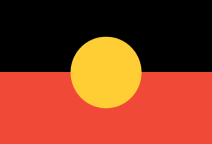Develop a recovery plan
Once you've taken full stock of the impact the crisis has had on your business, the next step is to develop a recovery plan.
A recovery plan helps you get your business back on track by reducing your recovery period and minimising your losses.
The plan should outline what the business needs to reopen and restore operations. The plan should include actions to achieve your objectives, a realistic timeframe and those responsible for carrying out the planned actions.
Revise your marketing and communications plan
Following a crisis, you'll need to make some quick marketing and communications decisions for your business. Questions you might want to consider:
- What product/s do I have to offer?
- Do I need to make any changes to it as a result of the crisis?
- How do I get customers back to my business?
- Which customer markets should I focus on?
- Do I need to discount my prices?
- What advertising opportunities should I participate in?
Revising your tourism product
One of the things you may discover after a crisis is that you might not be able to offer the same experience to visitors as you did before.
- Damage to the natural environment reduces the appeal for visitors. You may need to identify new natural attractions that are undamaged by the crisis and safe for visitors.
- You may not be able to offer your usual range of products or services due to damaged property or trouble with suppliers.
- Negative perceptions about the region reduces the number of visitors. You may need to restructure your product in some way to appeal to a new market as a substitute for those who are not visiting.
Most tourism operators alter their product offerings in some way to compensate for the impact of a crisis. It’s important to quickly notice what changes would help your business, how to put them in place, and then communicate them to potential customers.
The better understanding you have of your customers, the more proficient you can be at devising product changes that meet your customers' needs and aspirations.
Promote product changes
Once you've identified the types of product changes you need to put in place, work out how you'll inform your target market. This may include any of the following communication tools:
- Update your website, social media or other websites that feature your business. This may include the introduction of new packages and added extras.
- Send a newsletter or email to your customer data base or contact list to inform them about the new product.
- Let potential visitors know about any changes to your product when they contact you by telephone. Prepare briefing notes for reception staff to ensure the message communicated to visitors is clear and consistent.
You should contact existing bookings to let them know about any changes to your product if the experience they thought they were purchasing has been altered.
Steps for effective marketing
Step 1: Review your markets
Knowing who your customers are will always give you a head start when recovering from a crisis.
Do you know:
- where your visitors originate from - by country, state?
- the email and postal addresses of previous visitors?
- how your customers found out about you?
- why your visitors came to the area?
As long as you comply with the Australian Privacy Principles, it's easy to keep records of past visitors’ contact information. You can generally find most of the visitor's information via their booking details.
By maintaining a database of this information, you can:
- build a profile of your customers and their visitation patterns to help you make decisions about marketing and product development that are tailored to their needs
- build your relationships with previous customers by contacting them with information about special offers or new products
- entice potential customers who have shown interest in your business, meaning they will be more receptive to your promotions.
Email addresses are especially useful after a crisis as they provide you with a quick, cost-effective marketing opportunity to get a message out quickly to people who already know about your business, and who could be encouraged to return.
Make sure you comply with the Australian Privacy Principles.
EXTERNAL Privacy for organisations
Visit the Office of the Australian Information Commissioner (OAIC) website to understand your legal obligations when handling personal information.
Which markets recover faster than others?
The experiences of different businesses recovering from a crisis show that some markets recover faster than others. How markets respond will depend on the type of crisis.
If some of your usual markets are staying away, you:
- may be able to attract new markets to generate business, e.g. if hikers are staying away from a bushfire-affected area, reframe the sell by offering events based on food and wine or music to generate interest in visiting the area or business again
- can encourage your loyal customers to return for repeated business
- can focus on market segments that are less deterred by the specific type of crisis.
To stimulate cash flow, you may decide to focus on the bargain hunter market by discounting your prices in the short-term.
Do your homework
Work out which markets you should target in the short-term after a crisis event by completing Reviewing your markets (PDF 31.53 KB) and include this table in your marketing action plan.
Step 2: Decide whether to discount or value-add?
Discounting
After a crisis event, discounting can be a useful strategy to stimulate cash flow. If you decide that discounting is a good option, consider the following questions:
- How long will you offer the discount – one week, one month or a season?
- What will the value of the discount be?
- Can you cut costs and make some money while offering the discount, or will the discount create cash flow but mean that you operate at a loss?
- How will the discount be offered? For example, will it be a price reduction or a buy one, get one free?
Research suggests that if you discount, it should only ever be for a limited period, otherwise customers will come to expect the discounted price as the norm. Also, if you discount too heavily, it may damage people's perception of your product, giving the impression that it is of cheap quality. The more luxurious the product or service, the greater the risk of undermining your brand if you discount your prices.
Value-adding
An alternative to discounting is value-adding. Value-adding involves including additional products or services (for example a picnic hamper or cheese platter) for the same or slightly higher price.
It can be a way of making your product offer more attractive without changing the price, thus customers continue to pay full price for your product or service. This type of strategy makes the business less vulnerable to unsustainable cost-cutting.
Deciding the best option for you
Deciding which option is better at generating turnover after a crisis depends on the type of product you offer and how sensitive your markets are to price changes. If you run an upmarket restaurant, you would be more incline to protect the restaurant's brand if you provided extras for free, rather than discounted the meals, which could create an impression that the restaurant has reduced its quality and service offering.
However, if you run a caravan park that has a large number of on-site vans, cabins and tent sites, lowering your rates is less likely to be associated with a lesser quality experience. Your market may already be price sensitive and attracted to your budget accommodation, so you are not contradicting the reputation of your business by providing a discount.
Do your homework
Work out any changes to your prices or value-adds to your product or service that you want to put in place.
Step 3: Proactive marketing
People may choose not to visit your business after a crisis for a range of reasons. The key is to understand what these reasons are and to address them through your promotions to alleviate their concerns.
Recovery marketing ideas
Here are some recovery marketing ideas to consider, which have been adapted from Top 10 Marketing Tips for the 'credit crunch' by Laurence Bresh, July 2008:
Engage with past customers
Engage with past customers by sending them a newsletter or email to inform them about any new products, experiences or special offers. This is a quick and inexpensive method to get a message out to people who already know about your business and could be easily swayed to repurchase.
Be sure to comply with the Australian Privacy Principles.
Take advantage of media opportunities
Media opportunities may arise through your regional tourism board or media might contact you directly.
Media coverage can be a great marketing tool if your region is experiencing a downturn in visitation from a crisis even if only a small section may have been directly affected.
Remember
You have to have a personal story that will be of interest to the general public, not a sale offer. Consider press, radio, TV and online options.
The little extras: adding value
The saying, "it's the little things that count" is never truer than for a tourism business. To facilitate positive word-of-mouth promotion (generally found to be inexpensive and most effective), and return visitation, think about the added extras you can offer that will make customers happier and feel more satisfied with their experience.
Research about accommodation businesses reveals that cleanliness is the highest priority for a satisfactory experience. However, you should also consider the following features as possible value-adds for your business:
- welcome drinks or a basket of local produce
- discounts on local attractions and services
- a pick-up and drop-off service, and transfers to and from accommodation to a restaurant for dinner
- games for children in the winery, restaurant or accommodation
- books and magazines
- take-home mementos – photos of the tour, a booklet about local natural and cultural sites, quirky fridge magnet.
Events
Events can often be the trigger to bring people to your business at different times of the year. A winery may use a series of music events to bring a new audience to their winery. A town recovering from a bushfire may create an event to celebrate a lifestyle or cultural aspect of the area to give people a reason to visit other than its natural/usual features.
Also, look at opportunities to link your product or service with events being held in the region - can you develop a package, for example, your accommodation plus a ticket to the event, or provide an offer of a tour or tickets to a show to raffle at the event?
Packaging
Packaging is the grouping of products and experiences together that is then sold to customers as a single purchase item. You can package within your business, or link your product with other experiences in your area or region. The package must provide one or more advantages to the customer, e.g. convenience, greater value, cater to special interests.
Packaging has the potential to make your product more appealing or exciting by linking it with other products or services that would be of interest to the visitor. In doing so, it also provides cross promotional benefits between the businesses.
When marketing dollars are especially limited after a crisis, packaging also allows you to share promotional costs with other businesses. Look around you to see who you can package with.
Questions to ask:
- What would interest your customers as a package?
- How would the package be booked?
- How would it be promoted?
- How long would it be available for?
Find out more on packaging your product.
Work with your accredited visitor information centre
Are you taking full advantage of the promotional opportunities available through the extensive network of accredited, professional visitor information centres in Victoria?
Questions to ask:
- Do they always have adequate stocks of your brochure?
- Have the information centre staff and volunteers visited your business on a familiarisation tour?
- Have you offered a discount to the staff and volunteers to encourage them to visit your business for the full experience?
- Have you investigated opportunities to receive an additional profile in the information centres, such as a window promotion or special offers made available through the centre?
Work with Tourism Crisis Management Groups and regional and state tourism organisations
After a crisis, your regional tourism board, in association with DJSIR Tourism and Events and Visit Victoria, will establish a marketing program designed to bring people back to the region. This may include subsidised promotional opportunities to participate in press, radio and email promotions, or other initiatives. Spending your money on cooperative activities rather than going it alone can provide greater returns on your marketing spend.
Useful questions to ask before you get involved:
- What specific markets is the promotion targeting?
- How much exposure will your business receive?
- How much will it cost?
- How much business will the promotion need to generate to cover your participation costs?
- How will you track whether it generates bookings/sales?
Make a plan
The promotional activities that you decide should be listed in your marketing action plan. Identify who will be responsible in your business to make the plan happen, and use it as a tool to brief them.


